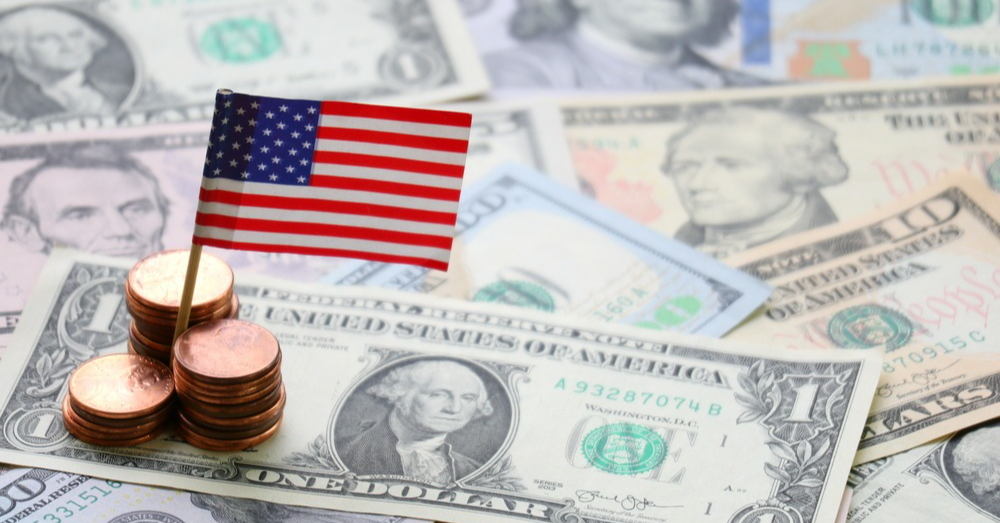This podcast was originally published by BFM 89.9. Find the original link at https://www.bfm.my/podcast/morning-run/market-watch/us-debt-ceiling-2023-global-markets-concerns.
In this podcast episode from BFM 89.9, the hosts discuss the latest updates on global markets and dive into the US debt talks. They are joined by Tony Nash, CEO of Complete Intelligence, who shares his perspective on the debt ceiling and its potential impact on the markets. Tony believes that a US debt default is unlikely and views the current concerns as overblown political maneuvering. He highlights that the debt ceiling issue arises regularly and is often resolved at the last minute, causing frustration among Americans.
The conversation then shifts to the state of the US economy, particularly the labor market. Tony notes that there is fatigue in jobs growth, with ongoing layoffs in various industries, including tech companies. The hosts also discuss the recent rise in the US April services PMI, indicating a shift from goods to services and suggesting continued growth in the services sector.
Nvidia’s quarterly results become the focus of the discussion, as the company outperformed expectations and experienced significant stock price growth. Tony explains that Nvidia is a key player in the AI infrastructure space and has benefited from the increasing adoption of AI and machine learning technologies. However, he cautions that the high valuation and potential impact of a recession on corporate infrastructure spending could affect Nvidia’s future performance.
The podcast concludes with a recap of Nvidia’s financial performance and analyst expectations, noting the positive sales figures and high target price. The hosts question whether a company involved in AI deserves the current forward PE ratio of 66 times.
Overall, this podcast provides insights into the US debt ceiling issue, the state of the labor market, and the performance of Nvidia in the context of the broader market trends.
Transcript
BFM
This is a podcast from BFM 89.9. The Business Station. BFM 89.9. It’s 7:06 A.M. On Thursday the 25 May. You’re listening to the Morning Run. I’m Shazana Mokhtar, with Wong Shou Ning and Mark Tan. In half an hour, we’re going to be discussing the outlook for Netflix and the US streaming services. But as always, we’re going to kick start the morning with a recap on how global markets closed overnight.
BFM
The markets are all red, probably thanks to the jitters surrounding the US debt talks. In the US markets, the Dow Jones was down 0.8%, S&P500 down 0.7%, and Nasdaq down 0.6%. Over here in the Asian markets, Nikkei down 0.9%, Hang Seng down 1.6%, Shanghai Composite down 1.3%, STI down 0.1%, and our own FBM KLCI down 0.1%.
BFM
All right, so for more insights on what’s moving markets we have on the line with us, Tony Nash, CEO of Complete Intelligence. Tony, good morning. Thanks, as always, for joining us. So let’s start with what seems to be keeping markets on tenterhooks. In recent commentary, though, you’ve opined that a US debt default really isn’t on the table. So why do you say that? And why are current concerns of a debt default overblown, in your view?
Tony
Yeah, so the debt ceiling literally happens every other year in the US. And it’s happened for the past 15 years. So I’ve said this many times. This is shameless partisan positioning intended to show politicians coming to the rescue of a crisis that they created themselves. So they’ll get media attention. Then at the last minute, probably after the deadline, they’ll miraculously find a solution when everything seems the most chaotic. So this is something that most Americans are really frustrated by. It’s like we know they’re not going to default. If they do, it’s ridiculous, and it’s just shameless partisanship. So are people here worried? To be honest, not really. I think a bunch of portfolio managers are being very careful in markets, but on a personal level, I seriously doubt that many people are all that worried.
BFM
So, putting aside the political shenanigans, of much greater importance to global markets is the state of the US economy, particularly the labor market. Is there a sense of fatigue in jobs growth or more room for expansion?
Tony
There’s definitely fatigue. If we look at the data since the end of COVID there’s a metric that the Fed…
Tony
Okay, we’re going to try and get Tony back to talk more about what’s happening with the US labor market. But as he said earlier about the debt ceiling, he’s taken a little bit of a, I guess, sanguine tone on it. He’s less worried that debt default will actually have long term implications. He thinks things will be resolved, just that it’ll take a lot of drama to get there.
BFM
Yeah, but the consequences are already being felt. I mean, I’m seeing this headline on Bloomberg, United States may be cut by Fitch on debt limit fight because US ratings have been placed on Watch Negative from Outlook Stable by Fitch. So the rating watch reflects the increased political partisanship that is hindering reaching a solution to race or suspend a debt limit despite the fast approaching, as we call it, X State. This is the first rating agency that has already given them some warning snakes, right? And once this happens, what this means is that the cost of borrowing is going to rise quite significantly on top of the fact that the interest rate in the US is already 5.2%. I mean, the Feds have raised it what, ten times since last year?
BFM
There’s a lot of moving parts to this picture, and I think there’s also discussion on what is it that other stakeholders in the US government can do if Congress can’t get its act together, what can the Treasury do? Can the Fed do anything? In any case, I think the Treasury will probably try to prioritize the debts that it owes, which means that some people will may not receive their bills. I think looking at Social Security and Medicaid and Medicare, hospitals, roads, who’s going to maintain all that?
BFM
Well, I do think that we have Tony back on the line. Tony, can you hear us?
Tony
Hi, guys. There you go. Sorry about that.
BFM
No worries.
Tony
On the debt ceiling. What’s interesting what’s happened is this week people in Congress asked Janet Yellen how she did her calculation on finding that X date. So it’s a kind of mysterious calculation and nobody knows. So people are trying to dig into that to understand when actually is the date, because nobody’s showing any math, nobody’s showing any data around it. And again, it seems like this is being hyped as a political ploy. So what you rightly point out about if it does come, the US government will have to prioritize payments. Right? And that’s fine. But again, voters and legislators don’t actually know how she’s coming up with that X date and a lot of people just don’t trust her.
BFM
Well, coming back to the point we were discussing earlier on the labor market, Tony, what’s your sense of how jobs is doing there?
Tony
Yes, jobs are in a rough spot. So there’s a metric called continuous unemployment claims and they’re at their highest level since the end of 2021. So I know that isn’t a long period, but stimulus is worn off, consumer credit levels are rising really fast, and tech companies are still laying off staff. So Verizon, a big telecom carrier here, just announced today that they’re going to be doing layoffs. So we’ve seen the Amazon and Facebook. Facebook yesterday announced another layoff. And so what’s happening now? That those initial layoff announcements were made to give a boost to stock prices. But now that that boost is largely expanded, people are simply not hiring. So they’re choosing not to hire for open jobs as a way to contain their workforce through just retirements and quits and that sort of thing.
BFM
Now, Tony, the US April services PMI rose from 55.1 from 53.6, surpassing the market expectation of 52.6. Isn’t this further evidence that at least in this sector, growth hasn’t been tempered by inflation or the rate hikes?
Tony
Yeah, well, certainly I think what it’s showing is an ongoing shift from goods to services. So during COVID everyone loaded up on goods. For the past twelve to 18 months, we’ve seen a trade off of goods purchases to services purchases. That services PLI will likely continue for the next two to three months, partly because the summer here in the US is holiday season, it’s vacation season, and so services will continue to thrive through that period. So we would expect a services PMI decline, maybe not necessarily contraction, but at least decline in Q3, probably mid Q3.
BFM
Okay, Tony, can we talk about one results, one set of results that came out last night, and that’s Nvidia. Right. They really beat street expectations up 20 over percent stock price. This is one tech stock that has done exceptionally well, I think a lot to do with AI. Are you bull on this name?
Tony
Well, Nvidia has done very well, and definitely top line growth surpassed expectations. So Nvidia is to the AI boom, which Cisco was to the Internet boom 20 plus years ago. Right. So they’re selling the infrastructure for AI and machine learning and a lot of these new capabilities, and people need them. And that same infrastructure is used for crypto mining and other things. So they planned extremely well, and they’re kind of reaping the profits of that right now. So as long as we continue to see companies adopting and expanding AI and machine learning capabilities, the value in Nvidia should be there. I don’t necessarily want to make a prediction on the stock price where it is right now. It’s a pretty high price in terms of valuation and other things. But I think in terms of corporate performance, it’s certainly strong and will remain strong.
BFM
So do you think any stock that has an edge or have first mover advantage when it comes to AI deserves a premium? Just pretty much like Tesla when it comes to electric vehicles?
Tony
Well, I think when you’re looking at a stock value, you have to look at the forward expectations. And so do you believe, or does an investor believe that that company that provides either AI software or AI hardware or something like that, do they believe there’s growth in that area? And if they believe there’s growth, so what’s the multiple on that growth and how quickly will it come? That’s how people come up with those price expectations.
BFM
Yeah, because when I look at Nvidia, the Bloomberg showing a PE of 66 times forward PE. So it looks like markets are really expecting a lot of growth.
Tony
Oh, yeah, they do. And I think part of the problem is people really load up on hardware first. And so that growth may very well continue at that same pace. But it really all depends on what happens to corporate infrastructure spending. And if that corporate infrastructure, meaning IT infrastructure spending continues, then it’s really good news for Nvidia. If we do hit a recession, then corporate infrastructure spending could be hit and that could hit Nvidia in a negative way.
BFM
Tony, thanks as always for the chat. That was Tony Nash, CEO of Complete Intelligence, talking to us about some of the trends that he sees moving markets in the days and weeks ahead. Capping the conversation there with just some thoughts on how Nvidia has performed. And we do have their results coming out overnight, right? They did really well, performing well beyond Wall Street expectations. Their sales in the three months ending July will be about $11 billion, which is 53% higher than what analysts were foreseeing.
BFM
Revenue for the first quarter was $7.2 billion versus 6.5 expected, while earnings per share was $1.9 adjusted versus the $0.92 expected.
BFM
Okay. Sorry.
BFM
Net income was $2.5 billion versus $1.62 billion from the same period last year.
BFM
Okay. I’m so excited to tell you how many analysts cover this. Well, a lot. 44 buys, 13 holds. No sells at all. At all. Okay. So consensus target price, $307, which is already very, very close to the regular market hours share price, which was down one dollars. And but I know aftermarket hours, the stock boomed, shattered by ceiling by going up by 20%. So I won’t be surprised if a lot of the analysts actually rush out to upgrade. But the ceiling to me is the fact that PE forward PES are 66 times. Do you think a company involved in AI deserves 66 times? Which was my question for Tony.
BFM
That’s right. And I think AI is going to be driving a lot of investor interest in these kinds of stocks. But let’s turn to another stock in the tech sector that hasn’t been doing so well or hasn’t done so well recently. Then that’s snowflake. Their sales outlook for the current quarter fell short of analyst expectations, and this did lead to a share downturn. Snowflake software helps businesses organize data in the cloud, and their quarterly revenue is expected to be growing at 34%, but well below Wall Street expectations.
BFM
Snowflake also cut its outlook for the fiscal year, saying product revenue will be about $2.6 billion versus 2.7 it predicted early in March. Analysts had feared that a slowdown demand for cloud services would dance. Snowflake’s pay as you go model.
BFM
Okay.
BFM
But still quite popular with analysts. 29 buys, 13 holds, two sells, albeit not as popular as Nvidia. Consensus target price for the stock, $188. Last time, priced during regular market hours, it was up all right at 718 in the morning.
BFM
We’re going to take a quick break, but we’ll come back to cover more top stories in the newspapers and portals this morning. Stay tuned BFM 89.9.
BFM
You you have been listening to a podcast from BFM 89.9, the business station. For more stories of the same kind, download the BFM app.





